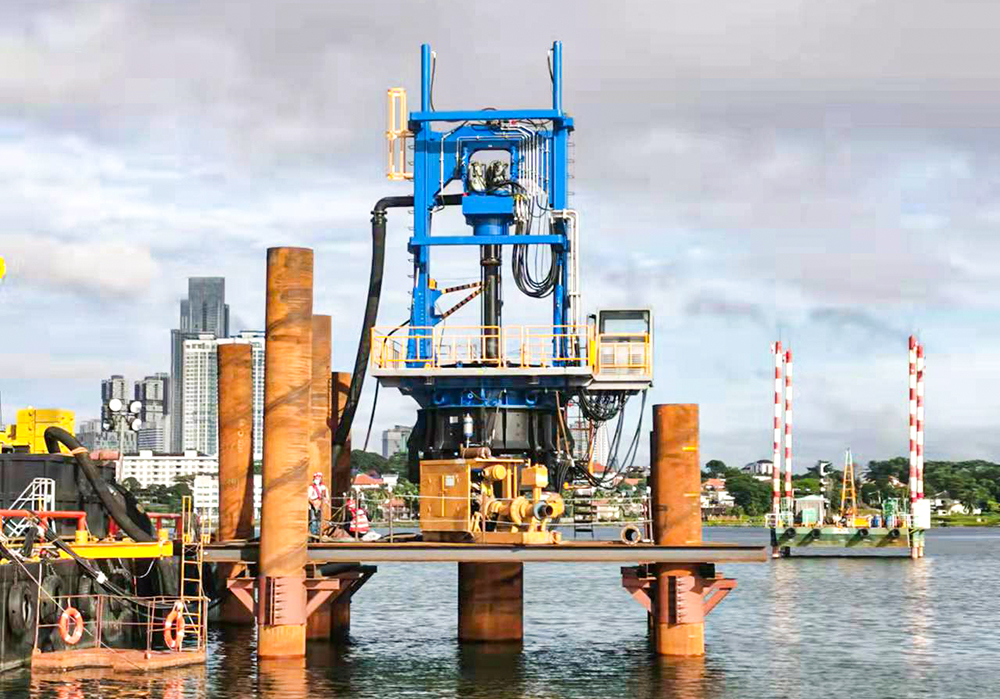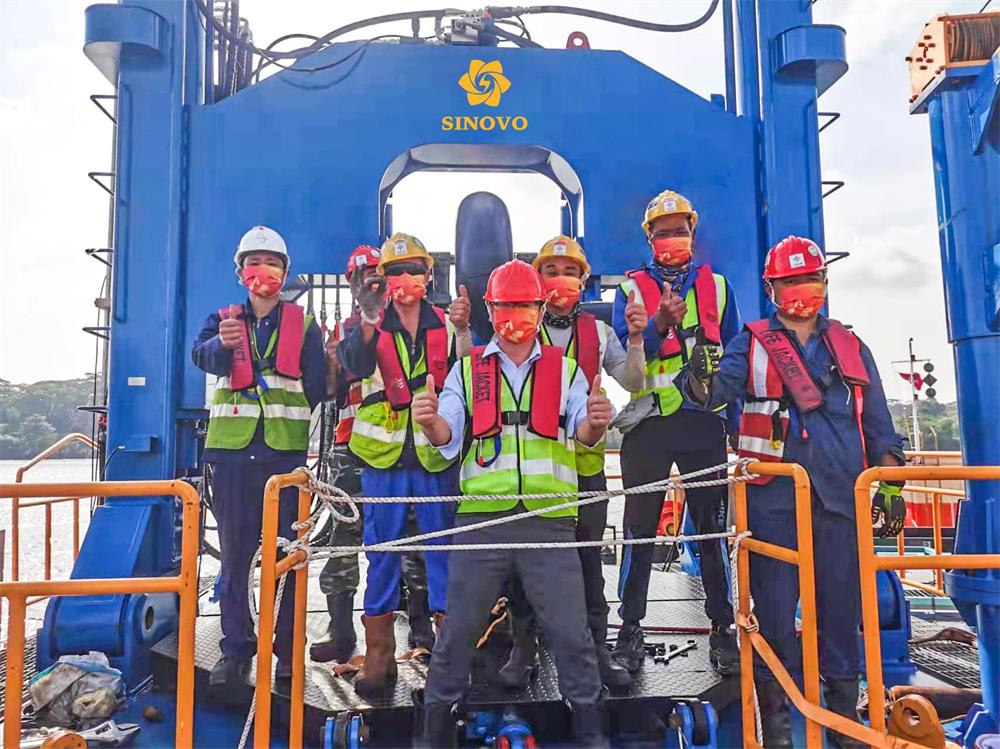Reverse circulation drilling rig is a rotary drilling rig. It is suitable for the construction of various complex formations such as quicksand, silt, clay, pebble, gravel layer, weathered rock, etc., and is widely used in the construction of buildings, bridges, water conservancy, wells, power, telecommunications, engineering precipitation and other projects.
Working principle of reverse circulation drilling rig:
The so-called reverse circulation drilling rig means that when working, the rotary disc will drive the drill bit to cut and break the rock and soil in the hole, the flushing fluid will flow into the hole bottom from the annular gap between the drill pipe and the hole wall, cool the drill bit, carry the rock and soil drilling slag that has been cut, and return to the ground from the drill pipe cavity. At the same time, the flushing fluid will return to the hole to form a cycle. As the diameter of the inner cavity of the drill pipe is much smaller than that of the wellbore, the mud water in the drill pipe rises much faster than the normal circulation. It is not only clean water, but also can bring the drilling slag to the top of the drill pipe and flow to the mud sedimentation tank, where the mud can be recycled after purification.
The principle is to put the drill pipe into the hole filled with flushing fluid, and with the rotation of the rotary table, drive the air tight square transmission rod and the drill bit to rotate and cut the rock and soil. Compressed air is sprayed from the nozzle at the lower end of the drill pipe, forming a mixture of mud, sand, water and gas lighter than water in the drill pipe with the soil and sand being cut. Due to the combined effect of the pressure difference between the inside and outside of the drill pipe and the air pressure momentum, the mud sand water gas mixture will rise together with the flushing fluid, and will be discharged into the ground mud pool or water storage tank through the pressure hose. The soil, sand, gravel and rock debris will settle in the mud pool, and the flushing fluid will flow into the manhole again.
Features of reverse circulation drilling rig:
1. The reverse circulation drill is equipped with a mechanical arm with drill pipe, which can be used in straight hole and small vertex angle conditions. At the same time, the drilling rig is also equipped with an auxiliary hydraulic winch, which greatly reduces the labor intensity of the machine workers, and is conducive to the safe and civilized construction of the machine.
2. The drilling rig adopts engineering crawler and hydraulic walking chassis, which is convenient to move and is more suitable for plains, plateaus, hills and other landforms. The chassis is equipped with 4 outriggers, so the drilling rig has low vibration and good stability during drilling construction.
3. The reverse circulation drilling rig is driven by electric power, with low noise and pollution, high efficiency and large power reserve coefficient.
4. The reverse circulation drilling rig is multifunctional, and all key components are cost-effective products. The system is equipped with pressure protection and alarm devices.
5. The handles and instruments of all actuators of the reverse circulation drilling rig are located on the operating platform, which is convenient and reliable for operation and control.
6. The reverse circulation drilling rig adopts a unique drilling frame. The drilling process is large, the torsion resistance is large, the structure is simple, the maintenance is convenient, the relocation is convenient, the orifice operation is convenient, and the large vertex angle drilling can be constructed.
7. The reverse circulation drilling rig adopts a large power head with the function of resisting large impact. The rotation speed is suitable for the air reverse circulation needs. The lifting force, torque and other parameters can meet the requirements of 100M shallow air reverse circulation DTH drilling and other process requirements.
Post time: Dec-16-2022



